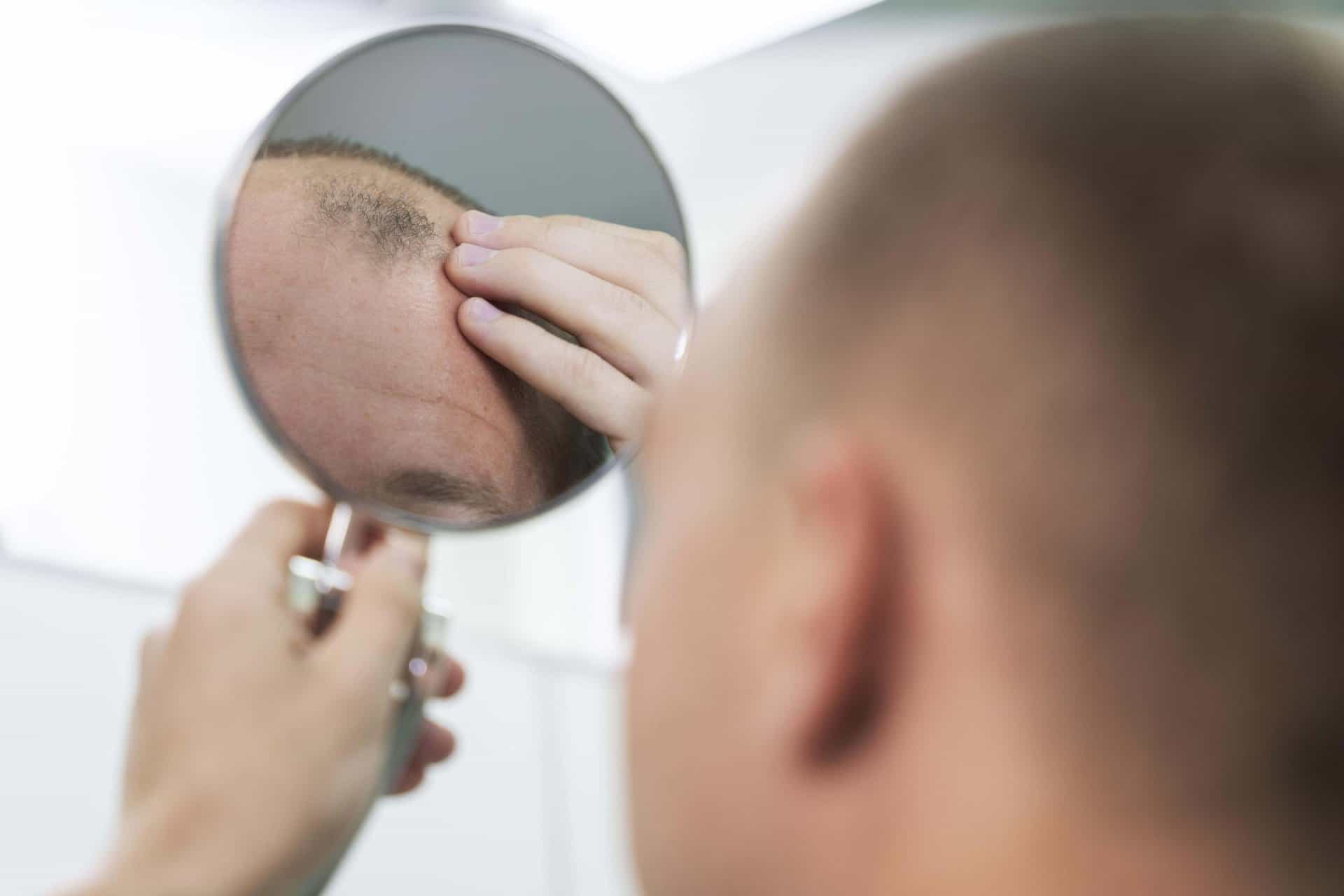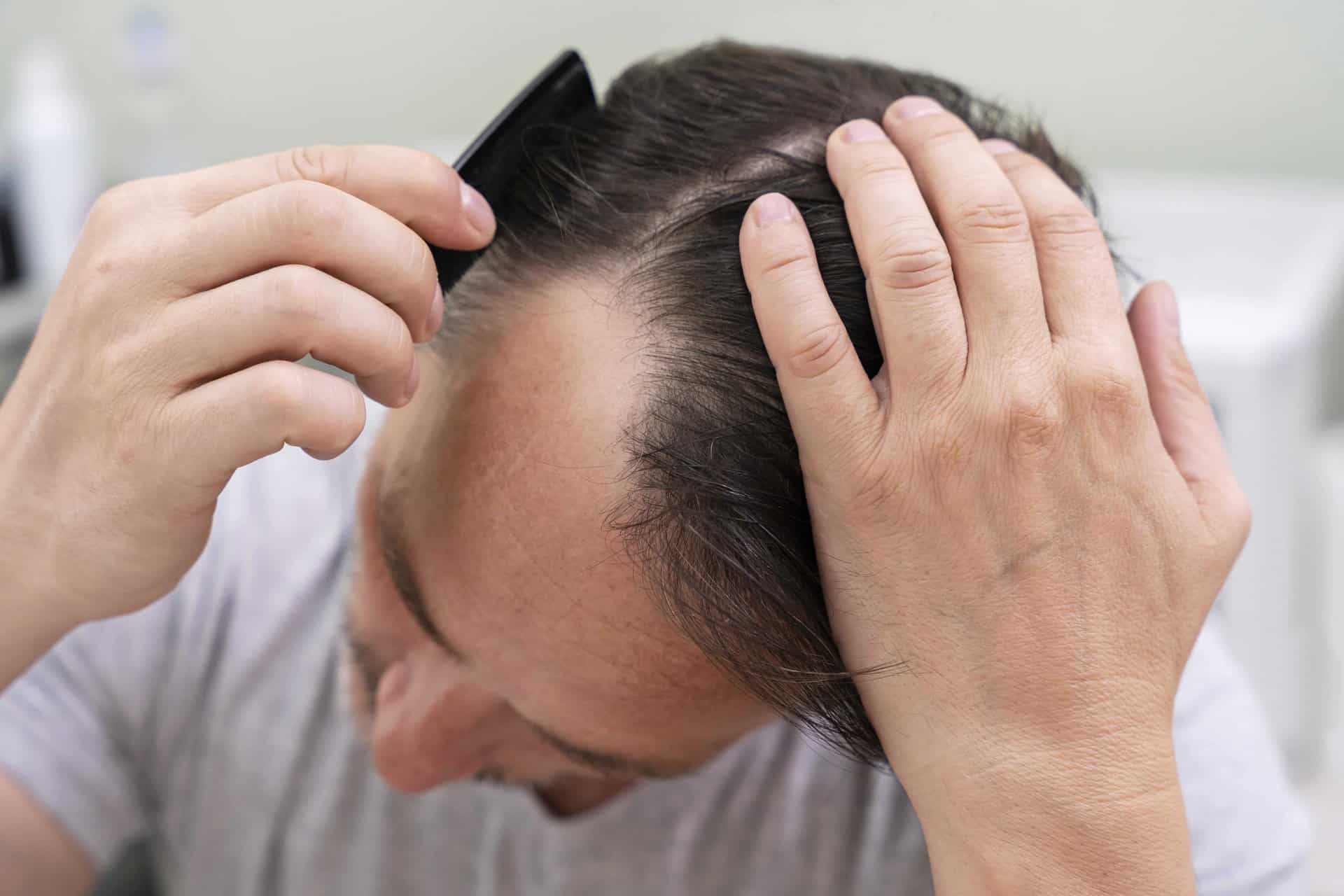As the demand for hair restoration continues to rise, understanding how long a hair transplant lasts has become more critical…
Comparing FUE vs FUT Hair Transplant: What’s the Difference?
Hair transplant surgery has become increasingly popular as a solution for those suffering from hair loss. With two primary techniques available – Follicular Unit Extraction (FUE) and Follicular Unit Transplantation (FUT) – patients must navigate the differences between these approaches to make the best decision for their individual needs. But how do you know which method is right for you? This comprehensive guide will explore the key differences between FUE and FUT, helping you make an informed decision, based on your unique circumstances.
Key Takeaways
- FUE and FUT hair transplants offer different benefits, with varying costs, recovery times, scarring levels and success rates.
- Factors such as extent of hair loss, desired results and budget should be considered when selecting between the two procedures.
- Consulting a qualified hair transplant clinic in Montreal is key for personalized advice on which procedure best meets individual needs.
Understanding FUE and FUT Hair Transplants
First, let’s start by determining the basic distinctions between FUE and FUT, the two primary hair transplant methods. Both techniques aim to restore hair growth by transplanting hair follicles from donor to recipient areas and addressing areas where hair is thinning or absent. However, the approach to harvesting and transplanting these follicles differs significantly. FUE involves the individual extraction of hair follicles, while FUT entails removing a lengthy strip of the scalp and subsequently dividing the follicles for transplantation.
Each hair transplant procedure has its own set of benefits and drawbacks, depending on various factors such as the patient’s hair type, budget, and desired outcome. A personalized consultation with a hair transplant clinic is necessary for optimal results before deciding on FUE or FUT.
FUE (Follicular Unit Extraction)
Follicular Unit Extraction (FUE) is a popular hair transplant method that offers a less invasive approach to hair restoration. The procedure involves harvesting individual hair follicles from the donor area (typically the back and sides of the scalp) and transplanting them to the recipient area, where hair is thinning or absent. One of the main advantages of FUE hair transplants is its minimal scarring, often appearing as small dots that can be easily concealed by surrounding hair.
The ideal candidate for an FUE hair transplant is someone who prefers a shorter hairstyle and wants a quicker recovery time with minimal scarring. However, there are some downsides to FUE, including the risk of damage to the follicular units during extraction and a lower yield of donor hair compared to FUT.
Despite these drawbacks, FUE remains a popular choice for patients who prioritize the cosmetic appearance and desire a less invasive procedure.
FUT (Follicular Unit Transplantation)
Follicular Unit Transplantation (FUT) is another standard hair transplant procedure that takes a more invasive approach to hair restoration. The FUT procedure involves:
- Removing a strip of skin containing hair follicles from the donor area, usually the back of the scalp.
- Dividing the strip into individual follicular units.
- Transplanting the follicular units to the recipient area.
While FUT typically yields a higher number of hair grafts than FUE, it also results in a linear scar on the back of the scalp, which may be more visible, especially in patients who prefer to wear their hair short. Nevertheless, FUT can be a suitable option for patients with a limited donor supply or those who prioritize the number of grafts over the cosmetic appearance of the donor area.
Analyzing Key Differences Between FUE and FUT:
A Comparison Chart
A comparison of cost, procedure, recovery time, and scarring is vital when deciding between FUE and FUT hair transplant procedures. Each technique has its unique advantages and disadvantages, depending on the patient’s individual needs and preferences.
Below is a comparison chart displaying a summary of important differences.
| Aspect | FUE (Follicular Unit Extraction) | FUT (Follicular Unit Transplantation) |
| Description | Individual extraction of hair follicles. | Removal of a strip of scalp, then dividing follicles for transplantation. |
| Scarring | Minimal, small dots easily concealed by surrounding hair. | Linear scar at the back of the scalp, more visible with short hair. |
| Recovery Time | Shorter, usually 3-5 days to resume regular activities. Full results in 12 to 18 months. | Longer recovery time, full results in 8 to 12 months. |
| Cost | Generally more expensive due to labor-intensive technique. | Generally less expensive. |
| Procedure Time | More time-consuming. | Quicker procedure. |
| Graft Yield | Lower yield of donor hair. | Higher number of grafts. |
| Pain Levels | Generally lower. | Tends to be more painful. |
| Ideal Candidates | Individuals preferring shorter hairstyle, quicker recovery with minimal scarring. | Individuals with limited donor supply or prioritizing number of grafts over cosmetic appearance. |
| Success Rates | High, between 90% to 100%, varies based on surgeon’s skill and patient’s adherence to post-operative care. | High, between 90% to 100%, varies based on surgeon’s skill and patient’s adherence to post-operative care. |
| Results Appearance | More natural appearance, but may take up to 18 months to be fully visible. | Results visible sooner (8 to 12 months) but linear scar may affect appearance. |
| Invasiveness | Less invasive. | More invasive. |
Cost Comparison
One of the main factors to consider when choosing between FUE and FUT hair transplant procedures is cost. Generally, FUE tends to be more expensive than FUT, mainly due to its more labor-intensive harvesting technique and longer procedure time.
The cost of a hair transplant in Montreal can vary depending on various factors, including the clinic, the extent of the procedure, and the individual’s specific needs. Weighing the pros and cons of each method and considering your budget is a critical step before making a decision.
Procedure Differences
Another critical difference between FUE and FUT is the procedure itself. As previously mentioned, FUE is a less invasive and more time-consuming process, extracting individual follicular units directly from the scalp. This precise extraction technique allows for minimal scarring and a more natural appearance, making it a popular choice for many patients.
On the other hand, FUT is a more invasive but quicker procedure involving the removal of a strip of skin containing hair follicles from the donor area. Although this technique yields a higher number of grafts, it also results in more visible scarring and may require a longer recovery time compared to FUE.
Recovery Time
Another important factor to consider when comparing FUE and FUT hair transplant procedures is the recovery time. FUE generally offers a shorter recovery period due to its less invasive nature. Patients can typically expect to resume their regular activities within 3-5 days after the procedure. However, it may take up to 18 months to experience the full results of the treatment.
In contrast, FUT, a more invasive procedure, has a longer recovery time than FUE. Your personal and professional commitments should be taken into account when choosing between the two methods, as the recovery time could affect your everyday life and activities.

Scarring and Appearance
One of the most significant differences between FUE and FUT hair transplant procedures is the appearance of scarring. FUE produces minimal scarring, as each hair follicle is extracted individually. The proficiency and expertise of the surgeon play a critical role in concealing these scars, making FUE a popular choice for patients who prioritize a natural appearance.
On the other hand, FUT produces a linear scar on the back of the scalp, which may be more visible, especially in patients who prefer to wear short hair. While this scarring may be a concern for some, others may prioritize the number of grafts and the cost of the procedure over the cosmetic appearance of the donor area.
Pain Levels in FUE and FUT Procedures
When considering hair transplant procedures, it’s natural to wonder about the pain levels associated with each technique. Patient testimonials indicate that the pain level associated with FUE hair transplant is generally low. This is likely due to the less invasive nature of the FUE procedure, which involves the direct excision of individual follicular units from the scalp without the need for stitches or a linear scar.
On the other hand, FUT hair transplant tends to be more painful than FUE, given its more invasive approach, which involves the removal of a strip of skin containing hair follicles. However, the level of pain is typically tolerable, and patients are often provided with pain relief medications to manage any discomfort during the recovery period.
Assessing Realism and Success Rates
Evaluating the effectiveness and success rates is crucial when comparing FUE and FUT hair transplant techniques, including fue hair transplant surgery. Both FUE and FUT boast high success rates, typically ranging between 90% and 100%. Factors contributing to these success rates include the surgeon’s skill, the quality of the donor hair, and the patient’s adherence to post-operative care instructions.
Bear in mind that individual factors and circumstances can cause the success rates of both FUE and FUT to vary. It’s essential to consult with a qualified hair transplant clinic and discuss realistic expectations before deciding on a specific procedure.
Ideal Candidates for FUE and FUT
The ideal candidates for FUE and FUT hair transplant procedures may differ based on various factors, such as hair type, budget, and desired results. Individuals with healthy hair follicles, minimal scarring, and a sufficient donor supply are typically the most suitable candidates for both FUE and FUT.
Those with dormant hair follicles, more widespread thinning or baldness may have less successful transplants. Similarly, those who have experienced hair loss due to chemotherapy treatments or those with very thick scars on their scalp may also experience complications in a hair transplant procedure.
Consulting with a hair transplant clinic is crucial to determine the procedure that best aligns with your needs and preferences, including hair transplant surgery.
Maximizing Your Hair Transplant Results

Following the pre- and post-operative instructions provided by your physician is essential to achieve optimal results from your hair transplant procedure, whether you choose FUE or FUT. Adhering to a proper nutrition and lifestyle habits, such as maintaining a healthy diet and abstaining from smoking and excessive alcohol consumption, can also contribute to the success of your hair transplant.
To ensure the success of the transplant and optimize the results, avoiding strenuous activities such as heavy lifting, swimming, and contact sports for at least two weeks after the procedure is crucial. Attending follow-up visits with your physician will also help track the progress of your hair transplant and make any necessary adjustments to ensure the best possible outcomes.
Real Patient Results: FUE vs FUT
The outcomes of FUE and FUT hair transplant procedures can vary depending on individual factors and circumstances. Real patient results of FUE hair transplant can take up to 18 months to be fully visible, with most patients observing the results between 12 to 15 months after the procedure.
In comparison, FUT hair transplant results can typically take up to 12 months to become fully visible, with most patients observing the results between 8 to 10 months post-procedure.
Although FUE hair transplant results may take longer to appear, they often provide a more natural appearance compared to FUT hair transplant results.
The contrast between the before and after results of a hair transplant highlights the substantial transformation in hair density and distribution, underscoring the remarkable improvement achievable through this procedure.
Making the Right Choice: FUE or FUT?
Ultimately, the decision to choose between FUE and FUT hair transplant procedures boils down to your individual needs and preferences. Factors to consider include:
- The extent of your hair loss
- Your desired results
- Your budget
- The importance of minimal scarring
Take these factors into account when making your decision.
Before deciding on a specific procedure, consult with a qualified hair transplant clinic to discuss your particular circumstances and expectations. By understanding the key differences between FUE and FUT, their pros and cons, and the factors that influence their success rates, you can make a more informed decision and achieve the best possible results for your unique situation.
Summary
In conclusion, FUE and FUT hair transplant procedures offer different approaches to hair restoration, each with its own set of advantages and disadvantages. By understanding the critical differences between these techniques, such as their cost, procedure, recovery time, and scarring, you can make a more informed decision based on your individual needs and preferences.
It’s essential to consult with a qualified hair transplant clinic to discuss your specific circumstances and expectations before deciding on a specific procedure. With the right choice and proper care, you can achieve the best possible results and regain your confidence with a fuller, more youthful head of hair.




